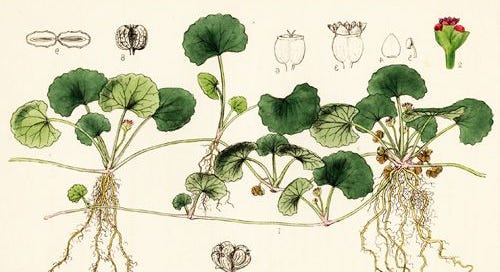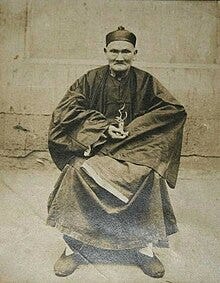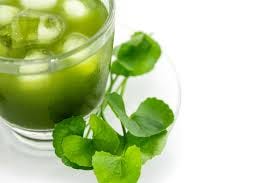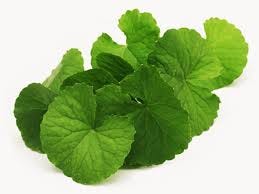Gotu Kola
Common names: gotu kola
Species: Centella asiatica (syn. Hydrocotyle asiatica)
Genus: Centella
Family: Apiaceae
Distribution
Originated in Asia, India and southeastern US but is now pantropical. It is naturalised in tropical Africa, Asia, Australia, South America and some Pacific islands.
How to identify it
Gotu kola is a perennial, creeping groundcover.
Leaves are 2-4cm wide and kidney-shaped, with a v-shaped slot where the leaf joins the stem.
Leaves have serrated margins. The edges look as if they have been cut with pinking shears.
Leaves have distinct palmate veins (branching out from a single point).
The leaves are borne on petioles or stems, about 2-4cm long.
The stems are slender stolons (creeping horizontal plant stems or runners that take root at points along its length to form new plants).
Stems are green to pink in colour, connecting plants to each other.
The root is a cream-coloured rhizome, covered with root hairs that grow vertically down.
The flowers are white or pinkish to red in colour, and found in small, rounded bunches (umbels) near the surface of the soil. They are almost invisible, as they are less than 3mm in size. Unless you look carefully for them they are easy to miss.
Each flower bears five stamens and two styles.
The fruit are densely reticulate (form a cluster), distinguishing it from species of Hydrocotyle which have smooth, ribbed or warty fruit.
There are many plants that look similar, such as swamp pennywort (Centella cordifolia), kidney weed (Dichondra repens), native violet (Viola hederacea), coast pennywort (Hydrocotyle bonariensis), alehoof (Glechoma hederacea), several ranunculus species and other Hydrocotyle species. Before using gotu kola, it is important to make sure you have the correct plant.
How to Harvest
Leaves
Gotu kola can grow year round in temperate climates but will die off in winter in cold climates. It is a very delicate plant with fine hair like roots so harvest leaves gently with a pair of scissors, cutting the leaves near the base of the stem to avoid damaging roots. Leaves can be used fresh or dried to use in the future.
Nutrients
Vitamins A, B, C, D, and the minerals calcium, chromium, cobalt, magnesium, manganese, phosphorus, sodium, potassium, selenium, silica and zinc.219
Culinary use
Gotu kola is used as a leafy green in Sri Lankan cuisine. It is most often prepared as malluma, a traditional accompaniment to rice and curry. In addition to finely chopped gotu kola, malluma almost always contains grated coconut, and may also contain finely chopped green chillies, chilli powder, turmeric powder and lime (or lemon) juice.
A nutritious porridge known as kola kenda is made with gotu kola by the Sinhalese people of Sri Lanka. Kola kenda is made with very well boiled red rice (with extra liquid), coconut milk and gotu kola, which is pureed. The porridge is accompanied with jaggery for sweetness.
Gotu kola leaves are also used in sweet ‘pennywort’ drinks, popular in Asia. In Indonesia, the leaves are used for sambaioipeuga-ga, a type of salad, and are also made into a pickle in Bogor. In Vietnam and Thailand, it is made into a drink, or eaten raw in salads or cold rolls. In Bangkok, vendors in the famous Chatuchak Weekend Market sell it as a health drink. In Malay cuisine, the leaves of this plant are used for ulam, a type of Malay salad. It is one of the constituents of the Indian summer drink, thandaayyee. In Bangladeshi cuisine, mashed gotu kola is eaten with rice.
Folk medicine
Centella asiatica has a centuries-long history of use in Ayurvedic and Chinese traditional medicines. Monographs of C. asiatica, describing its wound healing and memory enhancement effects, are found in the European Pharmacopoeia, Commission E of the German Ministry of Health, and the World Health Organization (WHO).
It has been attributed with a wide range of actions, including wound healing, anti-inflammatory, antipsoriatic, antiulcer, hepatoprotective, anticonvulsant, sedative, immunostimulant, cardioprotective, anti-diabetic, cytotoxic and anti-tumour, antiviral, antibacterial, insecticidal, antifungal and antioxidant.221
Gotu kola has been used medicinally for a multitude of conditions. Today it is mainly used to treat skin conditions and speed healing time of wounds, burns and bruises.
The 19th-century Indian pharmacopoeia recommends it for skin conditions such as leprosy, lupus, varicose ulcers, eczema, psoriasis, diarrhoea, fever and amenorrhea, and for diseases of the female genitourinary tract.
It is also used as a tonic for longevity, to strengthen digestion and increase overall metabolism. It has a particular effect on brain function, revitalising nerve and brain cells, promoting calmness and clarity, helping poor memory and lack of concentration, increasing meditation ability, and balancing the left and right hemispheres of the brain. It is used to improve intelligence and reflexes, renewing mental alertness, clarity and energy levels. It is also used for rheumatism and arthritis.
Stories of Gotu Kola associated with long life & wisdom
Chinese Folklore: Gotu kola is one plant attributed to the longevity associated with the T’ai chi ch’uan master Li Ching-Yuen. Depending on which account you read, he lived to be either 197 or 256, due in part to his usage of traditional Chinese herbs, including gotu kola.
Sri Lankan Folklore: Elder Gamini: A revered elder in a rural Sri Lankan village who is said to have lived well beyond a hundred years. He credits his remarkable longevity to the daily consumption of gotu kola tea.
Thai Tradition: Monk Thammarak: A fictional monk known for his exceptional longevity and vitality in Thai folklore. He is said to have lived a disciplined life, practicing meditation and consuming gotu kola and other herbs.
Indian Ayurvedic Tradition: Sage Vyas: In some Indian myths and legends, Sage Vyas is associated with longevity and wisdom. He is said to have lived for thousands of years and is often depicted as consuming herbs like gotu kola to maintain his health.
Indonesian Folk Beliefs: Mbah Surip: A legendary figure in Indonesian folklore known for his longevity. Mbah Surip is said to have lived well over a hundred years and credited his long life to consuming herbs, including gotu kola.
Research
Clinical trials have confirmed its use in the following areas; anti-inflammatoryi, wound healingii, atopic dermatitisiii, stretch marks in pregnancyiv,scar reductionv, cognitive functionvi and mood enhancingvii, ageingviii, reducing anxietyix, cardiovascular benefitsx.
How to use it as a medicine
Internally it can be used as an infusion, a juice, a powder or a tincture; externally as a cream, ointment or poultice.
I recommend using tincture on burns and open wounds to minimise the risk of infection. A sterile gauze dressing can be soaked in gotu kola tincture, applied to the the wound and covered with a bandage.
I have seen amazing results on burns, surgical wounds, and skin trauma when both topical application of tincture is applied along with internal consumption of gotu kola in a tablet or tincture. The best results occur if treatment is started within 24- 48 hours of injury.
For this reason I always recommend keeping a bottle of tablets or tincture in the house.
A typical daily dose is approximately 600 mg of dried leaves or infusion, single-dose capsules (300 mg to 680 mg, three time daily)
Dried gotu kola leaf as a tea, by adding 1-2 teaspoons (5-10 g) to about 2/3 cup (150 ml) of boiling water and allowing it to steep for 10 to 15 min and three cups (750 ml) were usually suggested per day.
Fluid extract (1/2-1 teaspoon equivalent to 3-5 ml/day or a tincture 2-4 teaspoons equivalent to 10-20 ml per day are sometimes recommended.
Cautions and contraindications
C. asiatica has no known toxicity in recommended doses. Avoid two weeks before surgery.
Gotu kola Iced Tea
(15 min) Makes 1 cup
Gotu kola drinks are a popular Asian beverage due to its refreshing taste and many healing benefits. It’s perfect for getting though work deadlines or study when it’s hot and you need to keep concentrating, because Gotu kola adds zest to your brain.
Ingredients
1 cup of fresh Gotu kola leaves (or 2 dessertspoons of dried leaves)
1 cup of water
2 dessertspoons of maple syrup
½ a lemon, juiced
1 sprig of mint
Method
Bring 1 cup of water to the boil and add the fresh or dried Gotu kola leaves and infuse until cool.
Add maple syrup, lemon juice, mint and ice cubes before serving.
Coming up next week
Next week I will share a delicious Gotu Kola Sambal an easy and delicious side dish that can provide all the health benefits of Gotu Kola
I would like to acknowledge the Kabbi Kabbi/Gubbi Gubbi peoples on who’s lands I live and work. I acknowledge that sovereignty was never ceded and pray this truth be acknowledged and respected by all who live, work and govern these lands.








